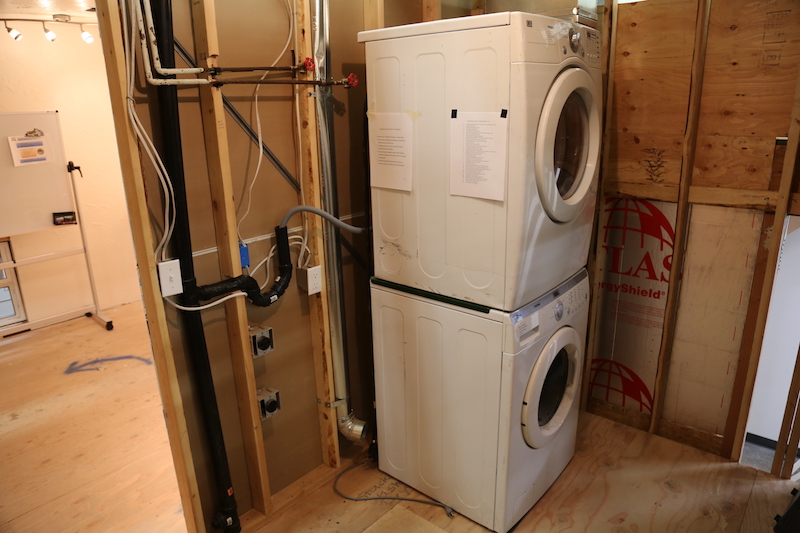
Clothes Washer Standpipe
The standpipe for a clothes washer should be at least 18 inches and not greater than 42 inches above the trap weir. The standpipe should be at least 2 inches in diameter.
OBSERVATION
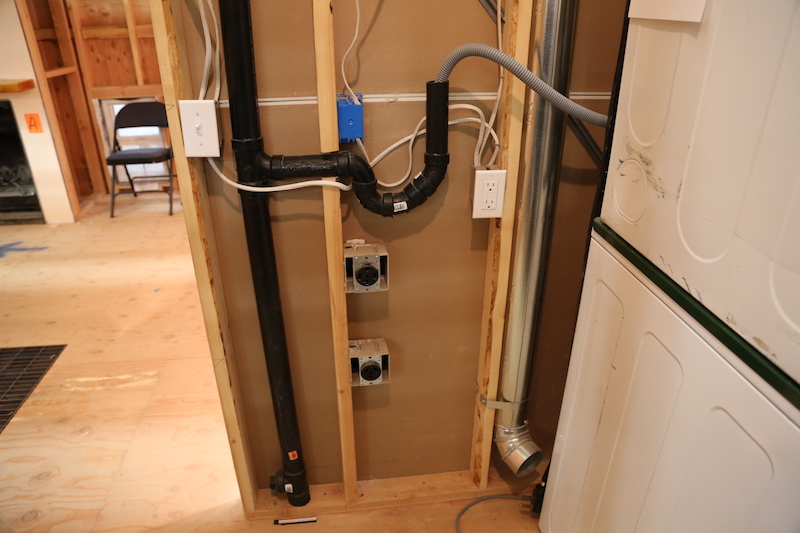
The standpipe is a defect. It is not installed according to the plumbing standards for standpipes, including:
- the diameter of the drainpipe is 1.5 inches and it is required to be at least 2 inches in diameter;
- the water trap at the standpipe is unconventional;
- the height of the standpipe opening is too low; and
- the tee fitting at the standpipe branch is upside down.
OBSERVATION
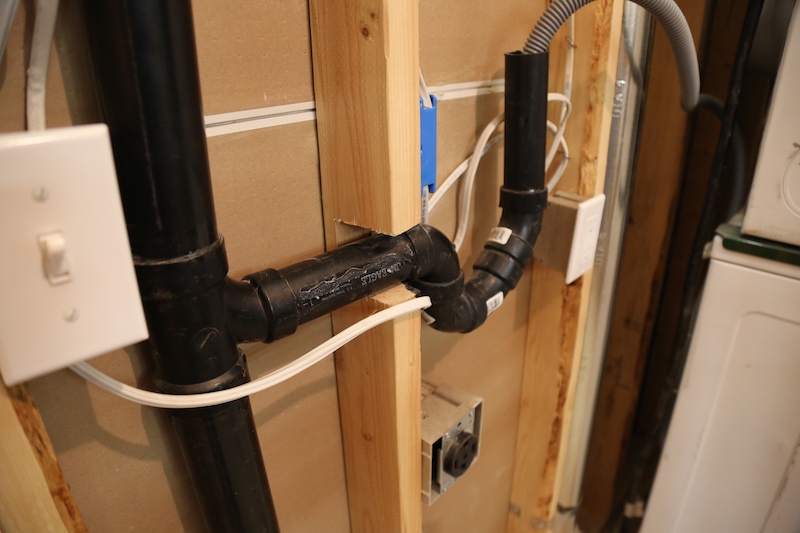
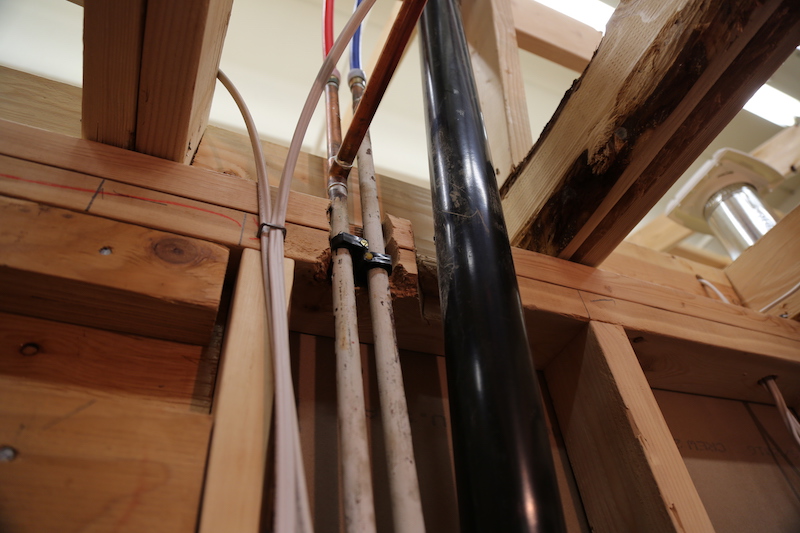
The framing was notched significantly to accommodate the drain pipes. Defect.
OBSERVATION
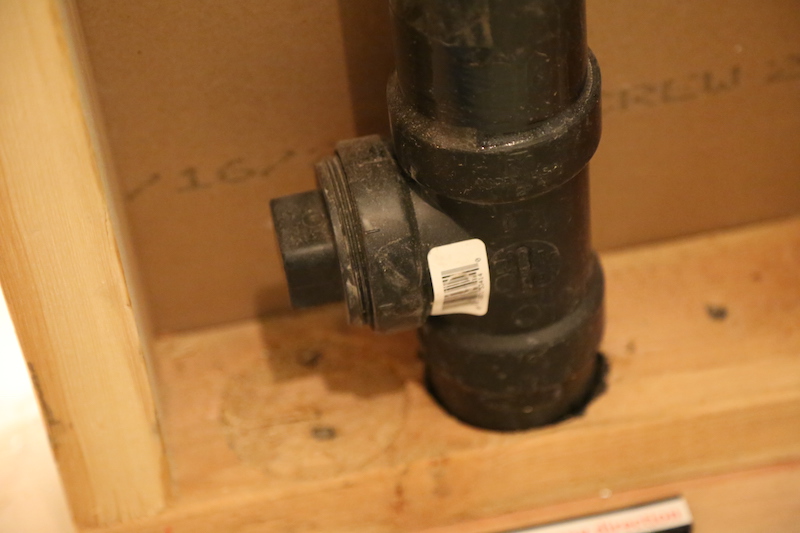
The cleanout fitting is not accessible.
OBSERVATION
The drainpipe stack is not vented and terminated properly at the roof.
Clothes Dryer
Do not use the term "dryer vent". Gas-fired clothes dryers are not "vented". They are exhausted. Clothes dryer exhausts systems must terminate to the exterior. The dyer must never exhaust into a crawlspace, attic, or other space regardless of whether the space is ventilated to the outdoors.
A clothes dryer's exhaust duct must terminate outside and must be equipped with a backdraft damper. Screens are not permitted. The duct should terminate at least 3 feet from an building opening.
Screws and fasteners are permitted to connect ducts, provided that the fasteners penetrate up to a maximum of 1/8 inch into the inside of the dryer exhaust duct. The ducts must be sealed with approved sealing tape or mastic.
Exhaust ducts must be smooth inside. Ducts must be at least 4 inches in diameter. Ducts must be supported every 4 feet or less. The insert end of the duct should extend into the adjoining duct in the direction of airflow.
Transition duct must be less than 8 feet in length.
The maximum duct length is 35 feet (2017 IRC G2439.7.4). For every 4-inch 45-degree fitting used in the exhaust duct, 2 and 1/2 feet must be deducted from the total length maximum. For every 4-inch, 90-degree fitting, 5 feet must be deducted.
OBSERVATION
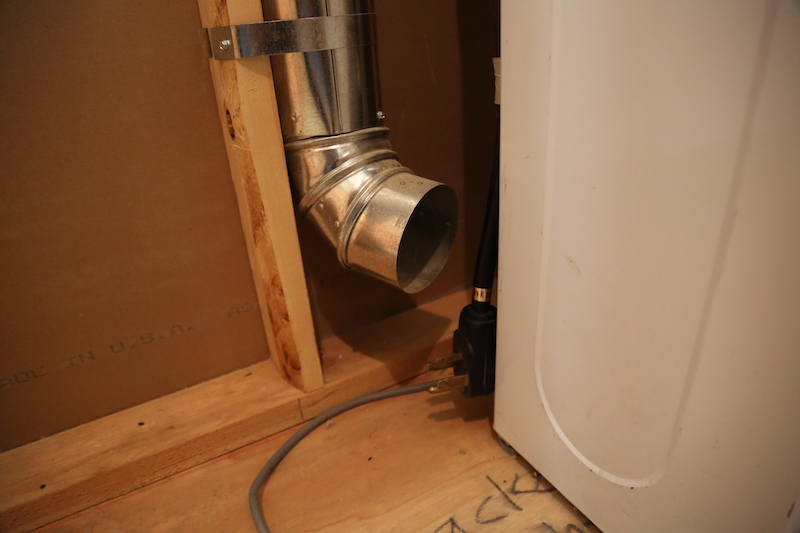
The dryer exhaust is not connected. The transition pipe is missing.
OBSERVATION
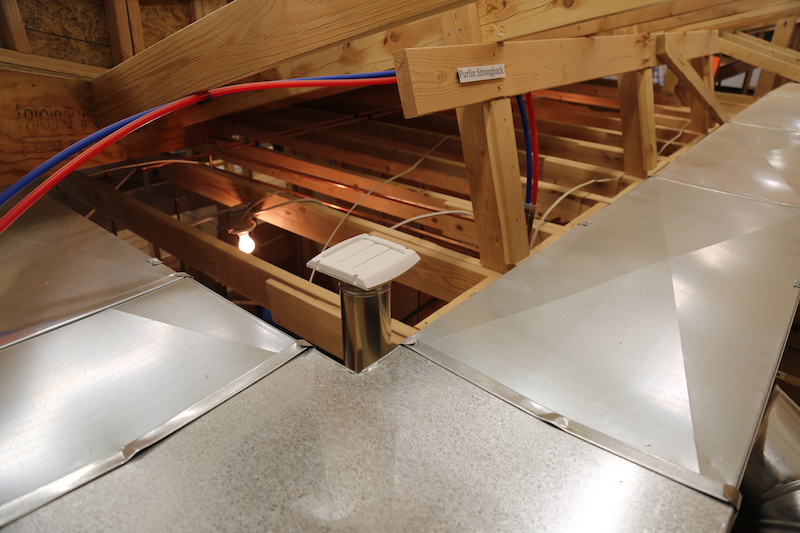
The dryer exhausts into the attic. Defect.
OBSERVATION
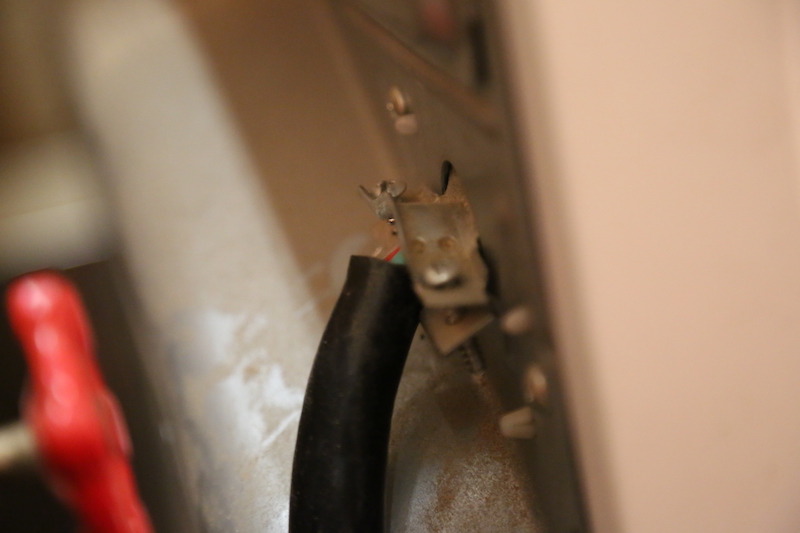
The electrical line for the dryer is pulling out of its clamp. Hazard.
Clothes Dryer Outlet
In 1996, the National Electric Code changed to require new homes to have 4-prong outlets for electric clothes dryers. This helped remove the potential for electrical shock. 3-prong outlets at electrical clothes dryers are dangerous.
OBSERVATION
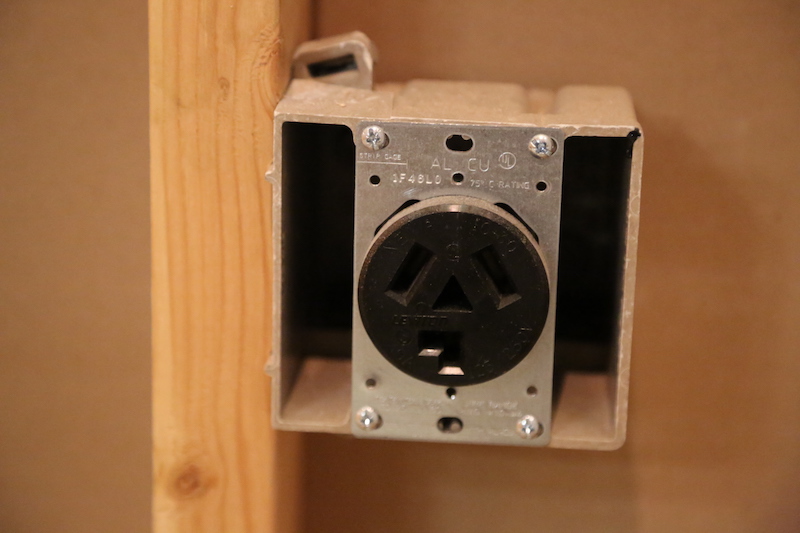
The dryer outlet is 3-prong and is dangerous, because of its potential to create electrical shock hazards. This is a defect.
Electrical
OBSERVATION
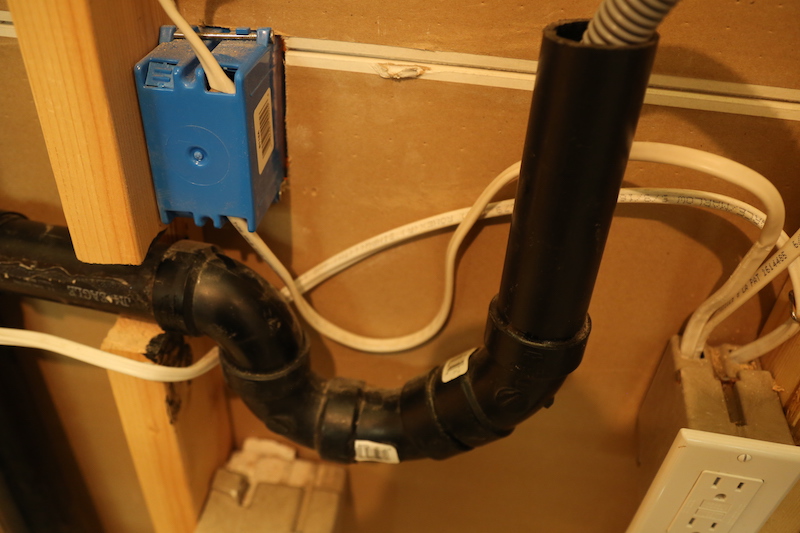
There are many electrical issues in the laundry room, including:
- loose wires;
- missing staple fasteners at wires;
- wires installed outside of the framing cavities;
- wires touching copper pipes;
- wires in contact with the furnace vent stack pipe; and
- GFCI receptacles wired in series where the 2nd GFCI is downstream of the 1st one.
Water Supply
The water supply hoses for the clothes washer should be pressure-tested hoses designed for clothes washers. Braided stainless steel hoses are recommended.
OBSERVATION
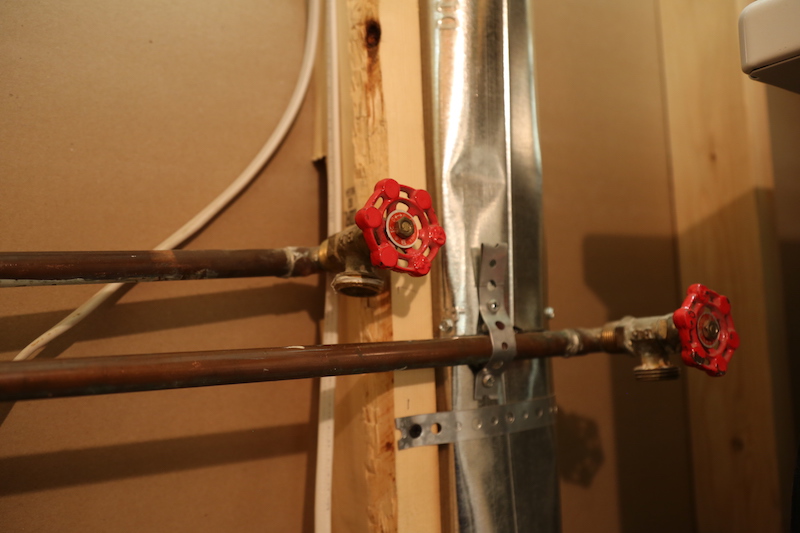
The water pipes are strapped to the dryer exhaust pipe. Defect. It's not reliable and the screws penetrate too far into the pipe interior.
OBSERVATION
There are no hoses installed.
OBSERVATION
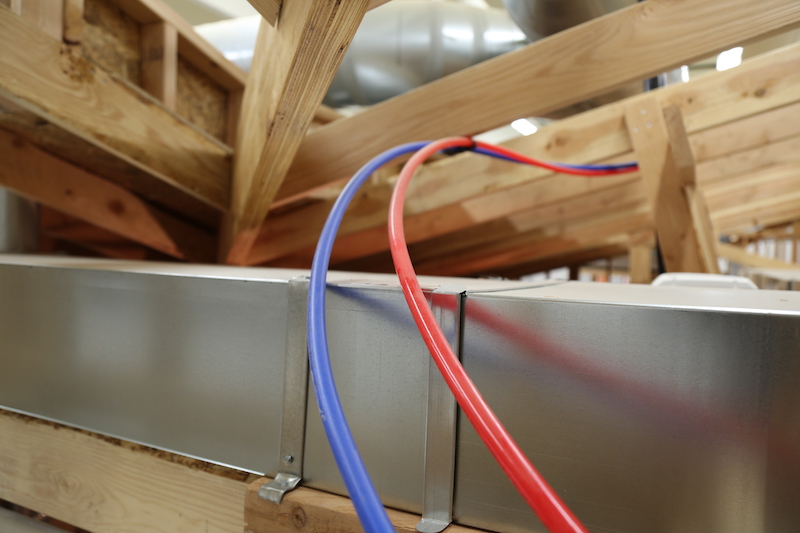
The water supply hoses are prone to freezing in the attic.
They are not supported well.
OBSERVATION
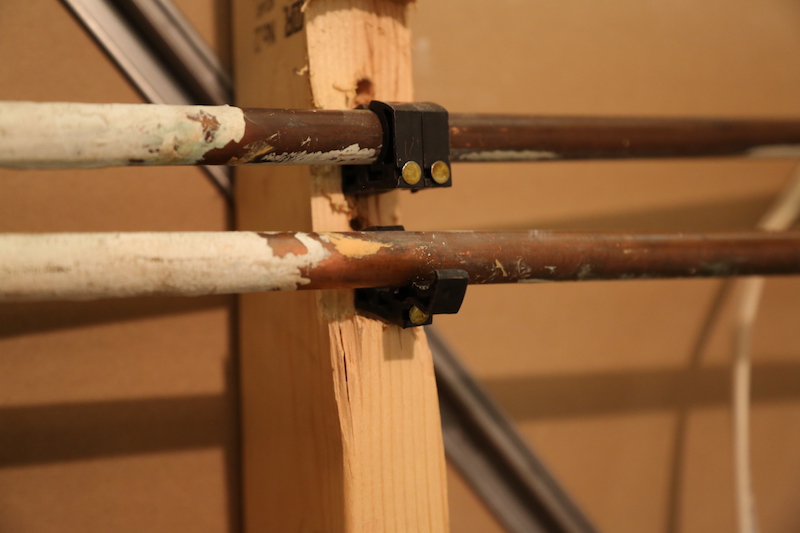
The water supply pipe fastener is broken.
OBSERVATION
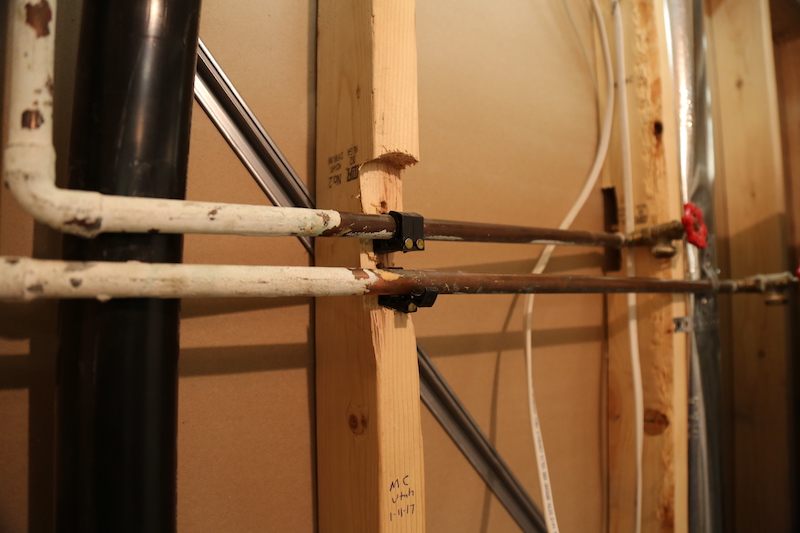
The wood framing members have been notched for the water supply pipes and has created structural defects.
OBSERVATION
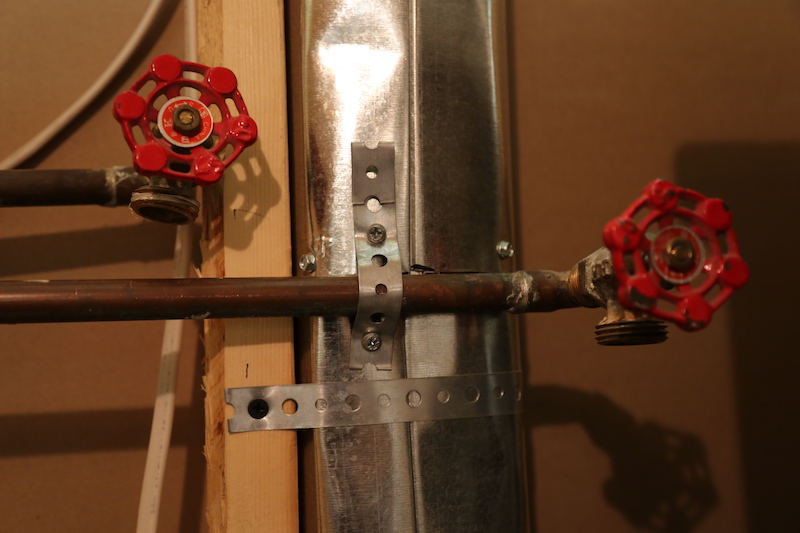
The water supply pipes are improperly attached to the dryer exhaust pipe. This is not reliable. The screws penetrate too far inside the pipe interior.
Floor Drain
The 2017 IRC code does not specifically require floor drains to be installed in laundry rooms, but buildings often include them to provide for emergency drainage or to help with other drainage needs (e.g., relief valves, water heater drainage, condensate drainage, etc.).
The floor drain should be at least 2 inches in diameter. The strainer should be removable for cleaning.
OBSERVATION
There is a floor drain in the laundry / furnace room.
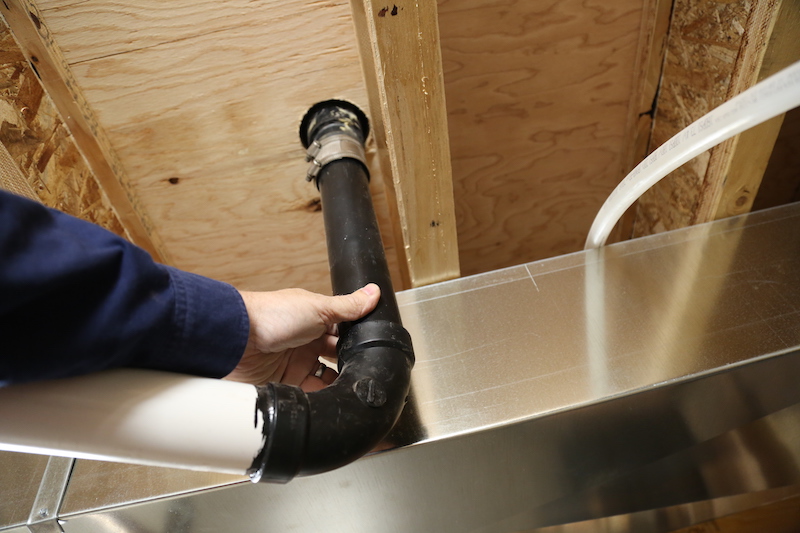
It is not securely attached to the floor.
OBSERVATION
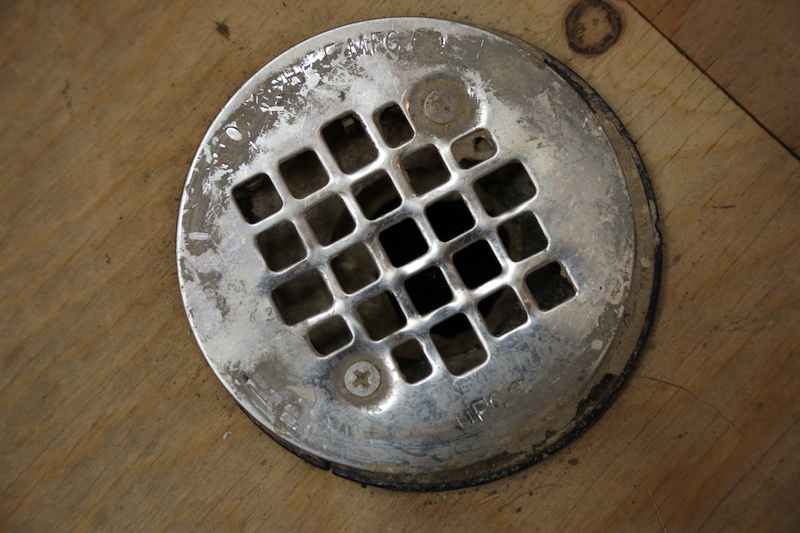
It is not installed at or below the floor surface would would restrict the drainage of surface water into the floor drain.
OBSERVATION
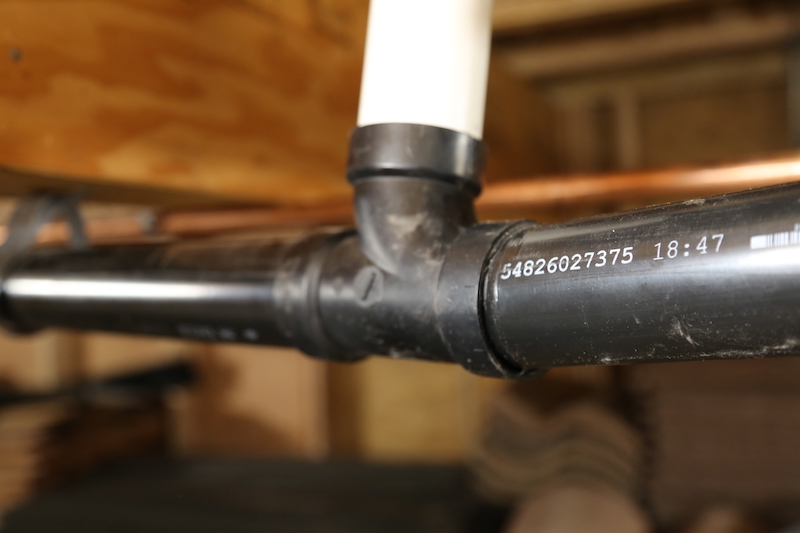
The tee fitting below the laundry drainpipe is installed improperly with an incorrect slope of the horizontal drain pipe and a poor connection.
Drain Pan
Where a clothes washer is installed in a location where a major water leak from the clothes washer appliance could cause damage, a water leak catch pan could be installed under the washer.
OBSERVATION
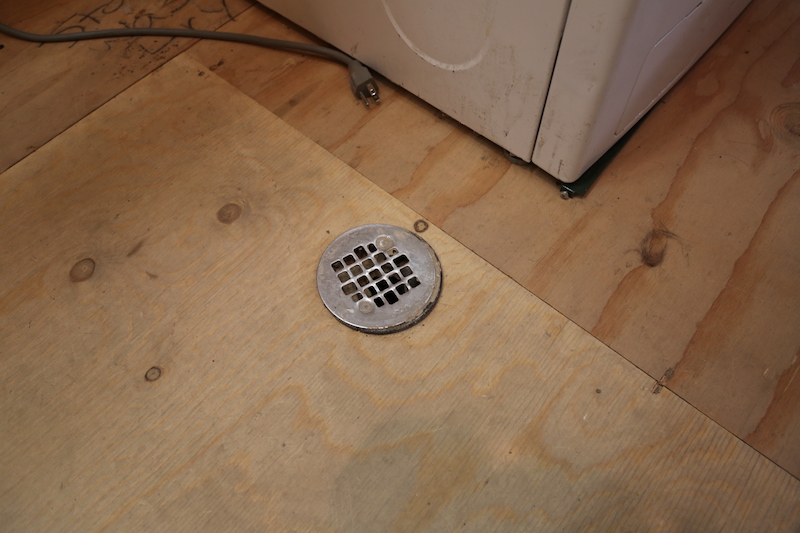
There is no water leak catch pan installed under the clothes washer appliance.
